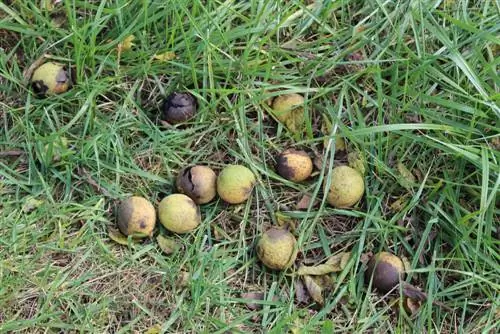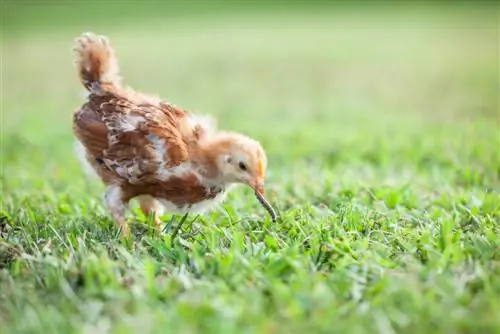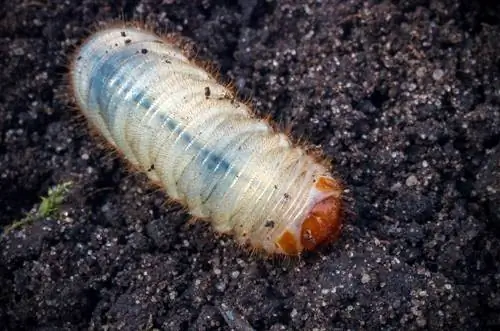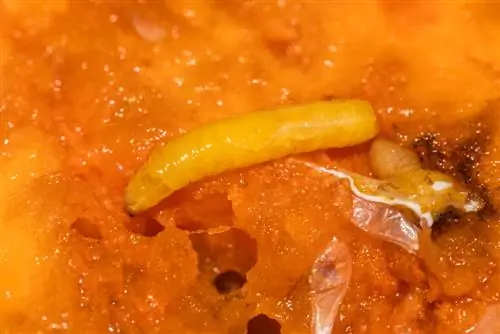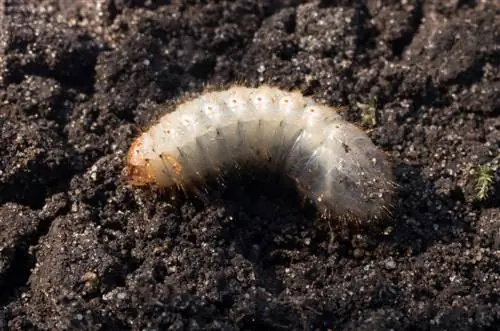- Author admin [email protected].
- Public 2023-12-16 16:46.
- Last modified 2025-01-23 11:22.
If the pericarp of your walnuts becomes black and greasy and the nuts do not ripen properly, your walnut tree is probably infested with the walnut fruit fly. An annoying matter, but one that can be managed with consistent measures.
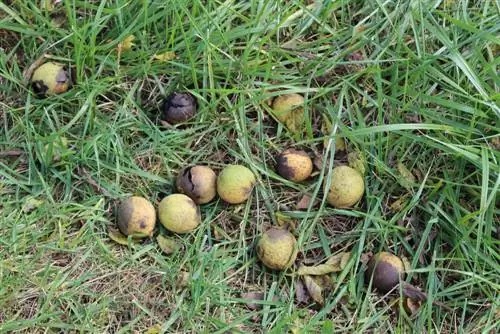
What are the causes and solutions for maggots in walnuts?
Maggots in walnuts are a sign of a walnut fruit fly infestation. As countermeasures, affected fruits should be removed and a ground fleece placed under the tree to prevent the maggots from hatching next year.
The walnut fruit fly in portrait
The walnut fruit fly is a drilling fly and, with its patterned coloring, looks very similar to the cherry fruit fly, also a pest. The adults are about the same size as common houseflies and have a very similar body structure. The walnut fruit fly was introduced from the USA, where it poses a major problem for walnut cultivation, which is an important segment of the export trade there.
The walnut fruit fly has a one-year cycle: it overwinters as pupated larvae in the soil and emerges in July of the next year. The flight and mating season is between the end of July and September. The mated females lay around 15 eggs per walnut. The maggots hatch there and feed on the green pericarp for around 3-5 weeks until they pupate.
The characteristics of the walnut fruit fly in brief:
- Belongs to the borer flies
- Size of a housefly, spotted coloring like cherry fruit fly
- Introduced to Europe from the USA
- Flying and mating season July-September
- approx. 15 eggs (and maggots) per fruit
- Nutrition of green pericarp maggots
Infestation characteristics
You can recognize an infestation by the blackish, greasy fruit casings of your walnuts. Round, black dots can already be discovered at the egg-laying site. The eaten fruit shell can typically hardly be separated from the nut shell, even if there is only a little of it left.
The nut itself is only indirectly affected because the reduced pericarp mass did not nourish it properly. This means that the nut kernels are just smaller. Due to the black fruit casing residues sticking firmly to the shell, the nut no longer looks attractive and can hardly be sold without extensive cleaning with a high-pressure cleaner (€105.00 on Amazon) and subsequent drying.
Countermeasures
In order to limit the annual recurring infestation, the following measures are advisable: If a maggot infestation has already occurred, you should, if possible, harvest all the affected fruits from the tree and pick them up from the ground. Next year it is recommended to lay a ground fleece under the tree from June onwards. This prevents the pupated maggots from hatching and getting out of the ground. They may even be killed by overheating.

